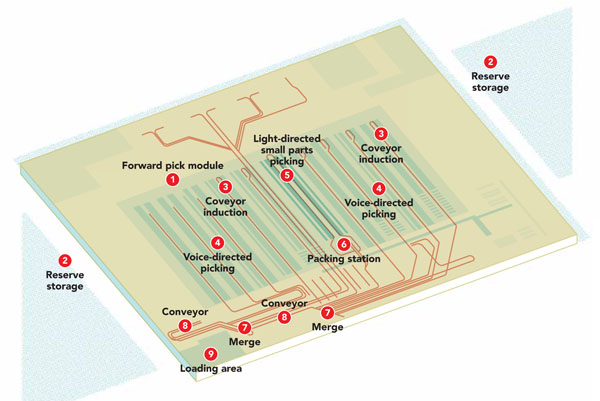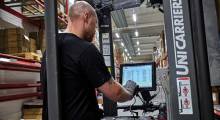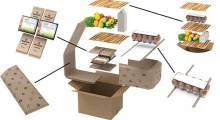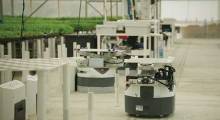RadioShack; Fort Worth, Texas
Size: 600,000 square feet total, of which 25,000 square feet represents the new pick module and 95,000 square feet represents dedicated storage for the pick module
Products handled: Small parts and pieces, such as electronics parts, batteries and accessories
Stock keeping units: 1,800
Throughput: 300 lines picked per hour from pick module
Employees: 70
Shifts/Days: 1 shift/4 days per week
A new layout coupled with new technology has enabled RadioShack to reduce the space devoted to small parts picking while increasing productivity. The pick module is driven by its own receiving, replenishment, picking and shipping processes.
Putaway/replenishment: Pick module replenishment is a paper-based replenishment process driven by the legacy warehouse management system (WMS). Orders that will be picked during the day are received into the WMS each morning. The SKUs and quantities required to fill the orders are matched against the amount of product already in the forward picking area (1). Stock move tickets are then automatically created to replenish any inventory that is below the quantity necessary to fill orders. RadioShack refers to these as auto move tickets.
The auto move tickets are distributed to lift truck operators assigned to replenishment. The tickets direct them to the correct reserve storage location (2) to retrieve pallets or cartons required to replenish a forward pick location. Those items are then dropped off in a ready rack area—comprised of shelving located behind the forward pick locations designated for replenishment. There, an associate transfers the product from the ready rack to the correct carton flow rack in a forward pick location.
Picking: At the corporate level, an inventory management team reviews the current sales history for each store and a forecast for what the stores are expected to sell. Based on that review, the team creates replenishment orders for the stores served by the Fort Worth facility. The goal is to make sure that each store is replenished in advance of the weekend, which is RadioShack’s busiest time. Orders are downloaded into the WMS each evening and are then passed to a transportation management system (TMS). To make a weekend replenishment schedule, orders are prioritized based on the transit times: Orders for the stores with the longest transit times are scheduled to be picked on Monday while orders with shorter transit times are shipped later in the week.
The TMS also optimizes the orders, based on whether it is most economical to ship using a pooled distribution model, express freight or some other type of shipping mode. Once the TMS has optimized orders, they are passed back to the WMS and shipping labels are printed.
Once the picking begins, shipping labels are placed on a carton which also includes a license plate bar code. The carton is automatically scanned when it is inducted onto the conveyor system (3) and delivered to the first zone where there is a pick. Consumer electronics and other products are picked from one of nine voice-directed picking zones (4). Signature products are picked from the light-directed small parts picking module in the center of the picking module (5). There, an associate scans the carton. The pick-to-light system then tells the operator which items and in what quantity are picked in that zone. Once the picks are complete, the system directs the associate to pass the carton to the next picker in the zone, or to push the carton onto a takeaway conveyor that will direct it to the next zone with a pick.
Packing and shipping: Once all of the picks for that carton are complete, the last associate closes the carton and it is diverted to a takeway conveyor that delivers it to a packing station (6). There it is filled with any dunnage required for shipping and automatically taped. From there, the carton is merged (7) onto a conveyor system (8) feeding the loading area (9), where it is loaded directly into a truck.
System suppliers
System integration, motor-driven roller conveyor, WCS, divert and zone-skip technology, pick-to-light technology: Intelligrated, intelligrated.com
Lift trucks: Toyota, toyotaforklift.com; Raymond, raymondcorp.com
Voice technology: Vocollect, vocollect.com
Bar code scanning: Motorola Solutions, motorolasolutions.com
TMS: Manugistics (JDA Software), jda.com
Dunnage fill system: Ranpak, ranpak.com
Rack system: Pick module was retrofitted from existing rack
WMS: Legacy system








